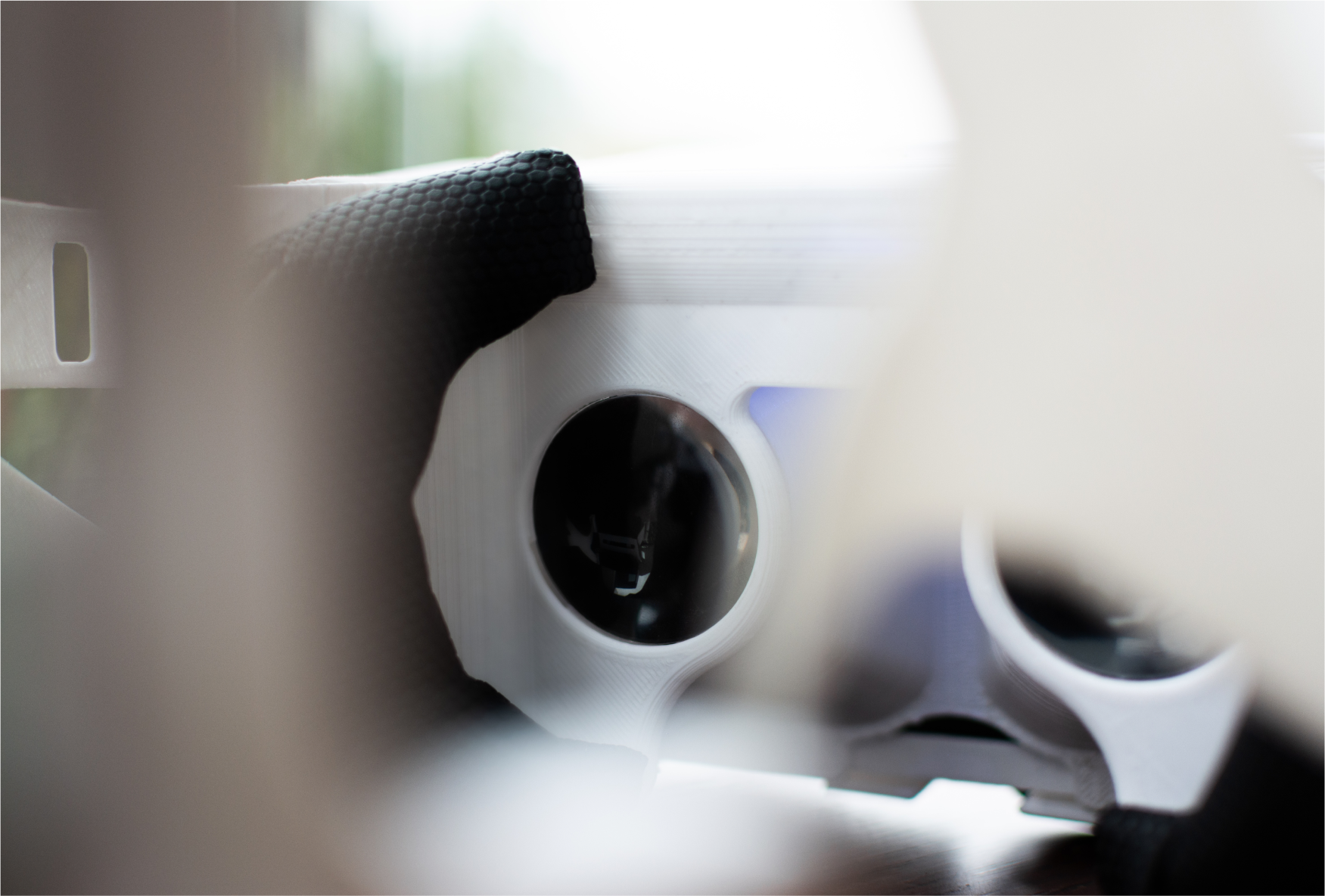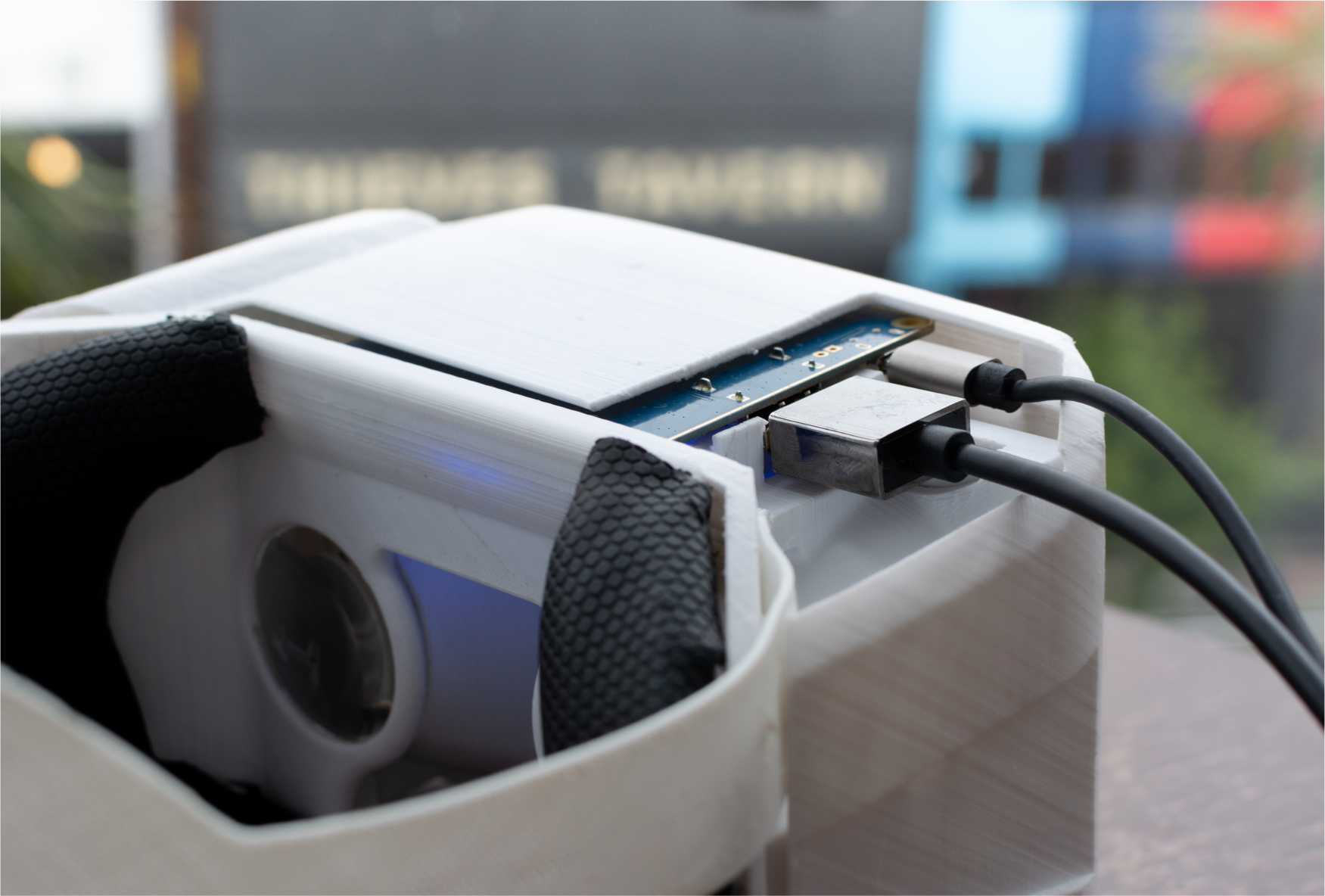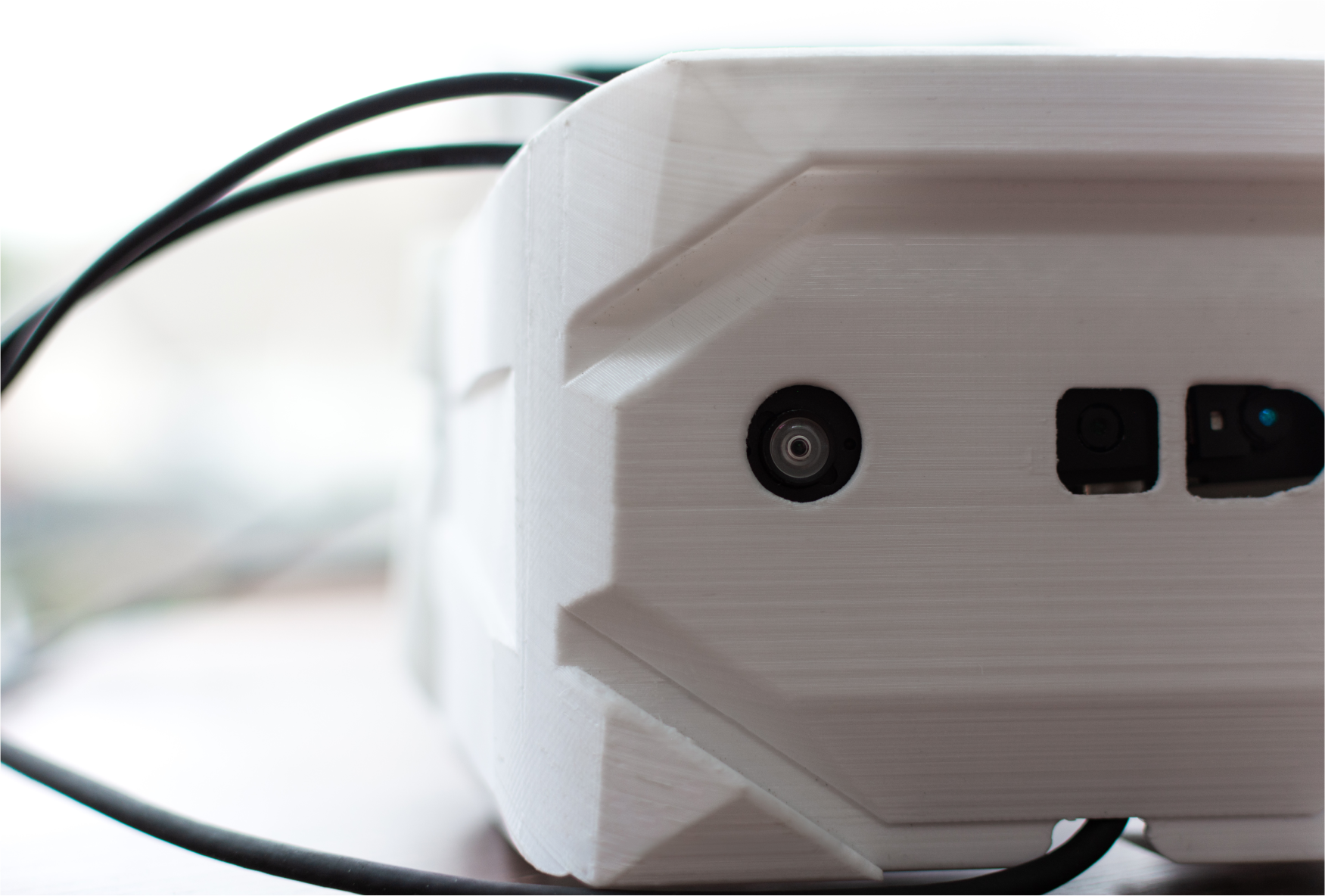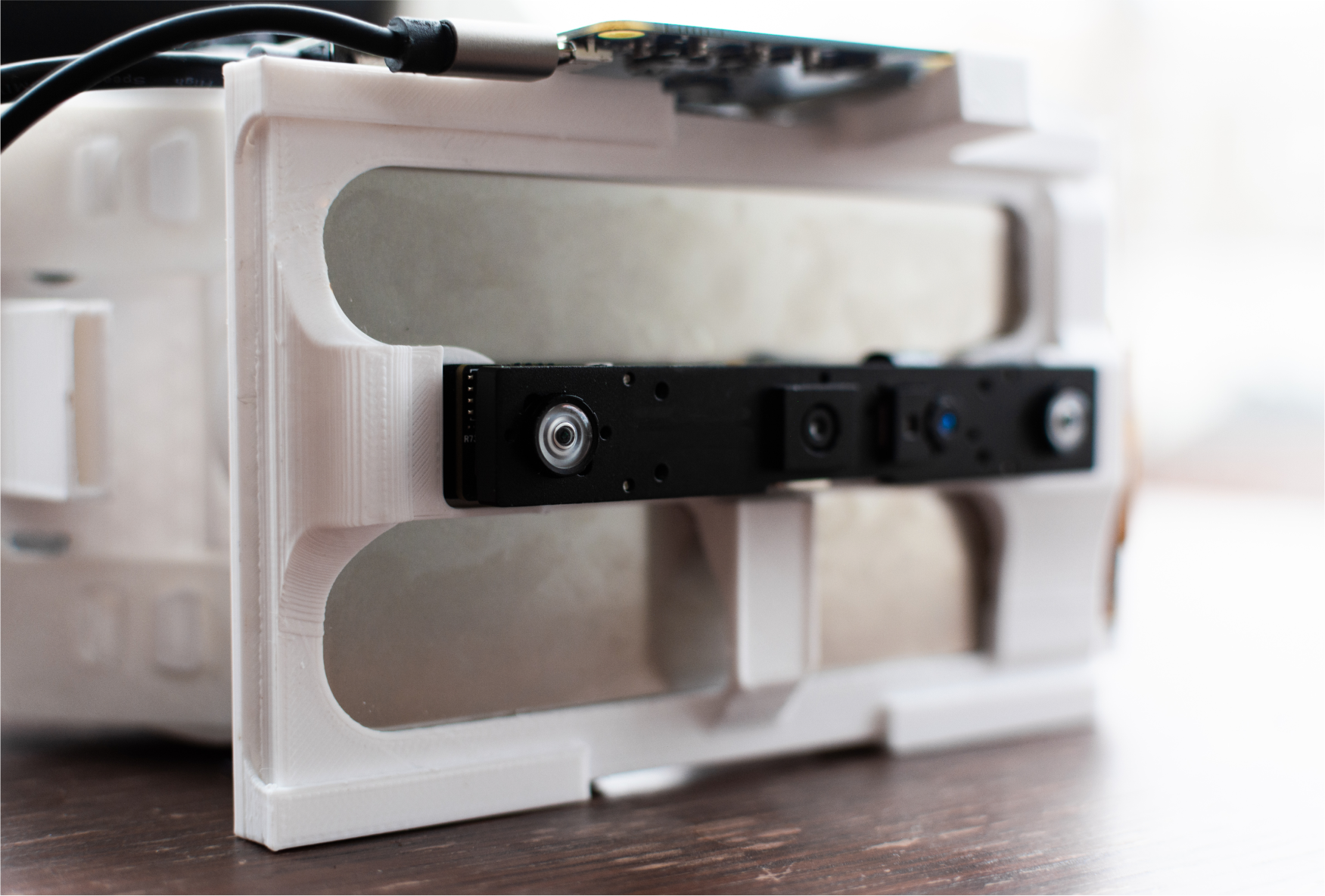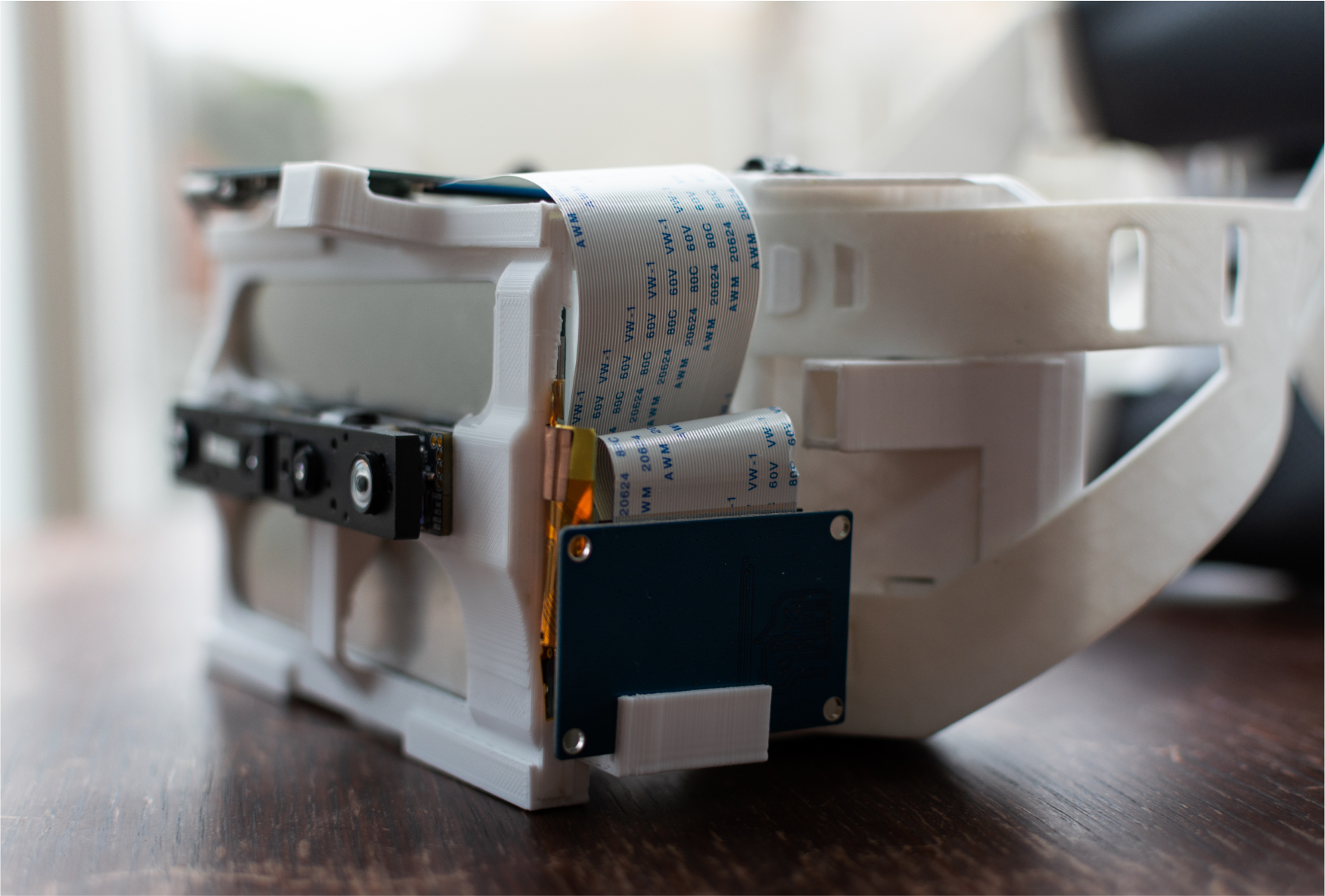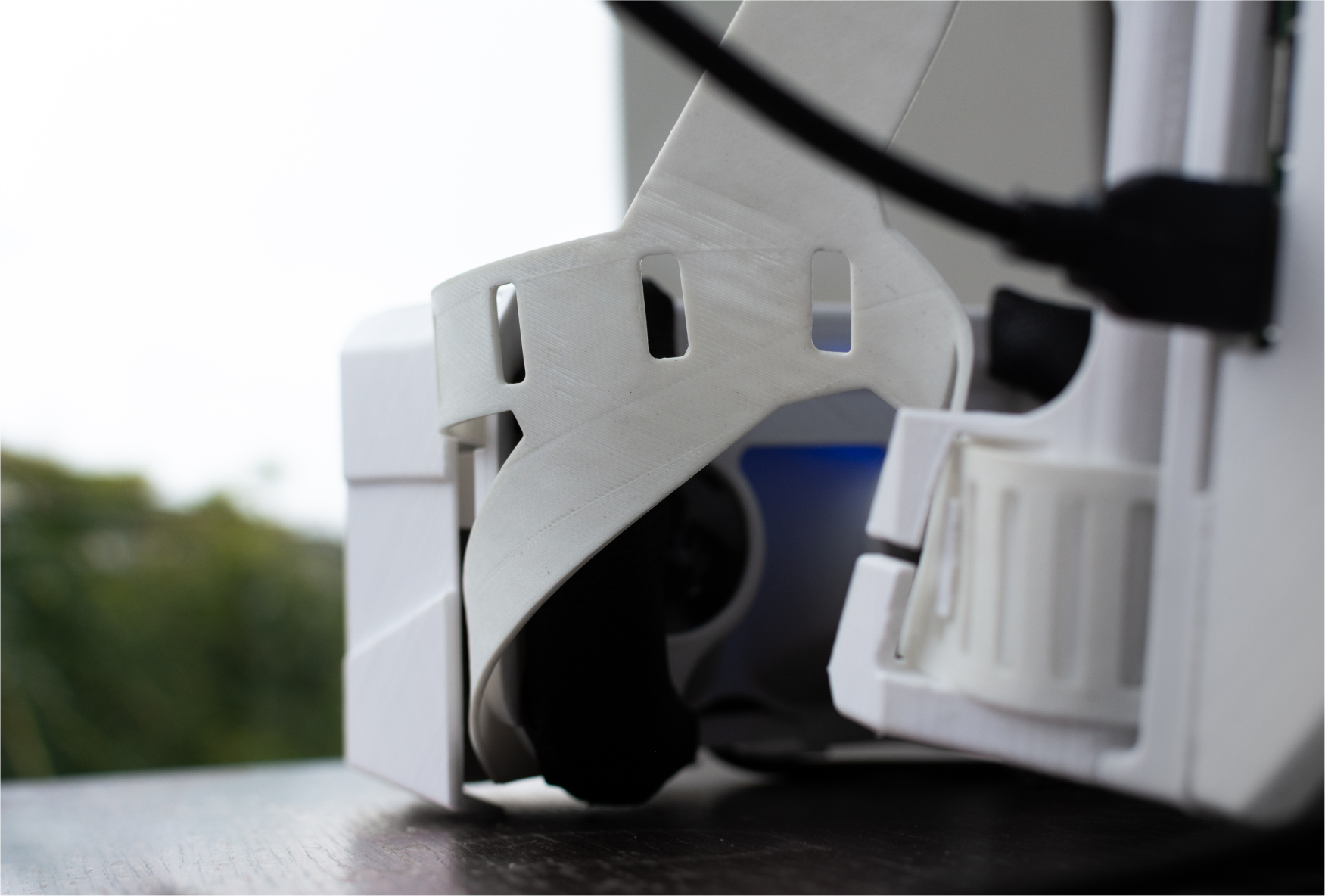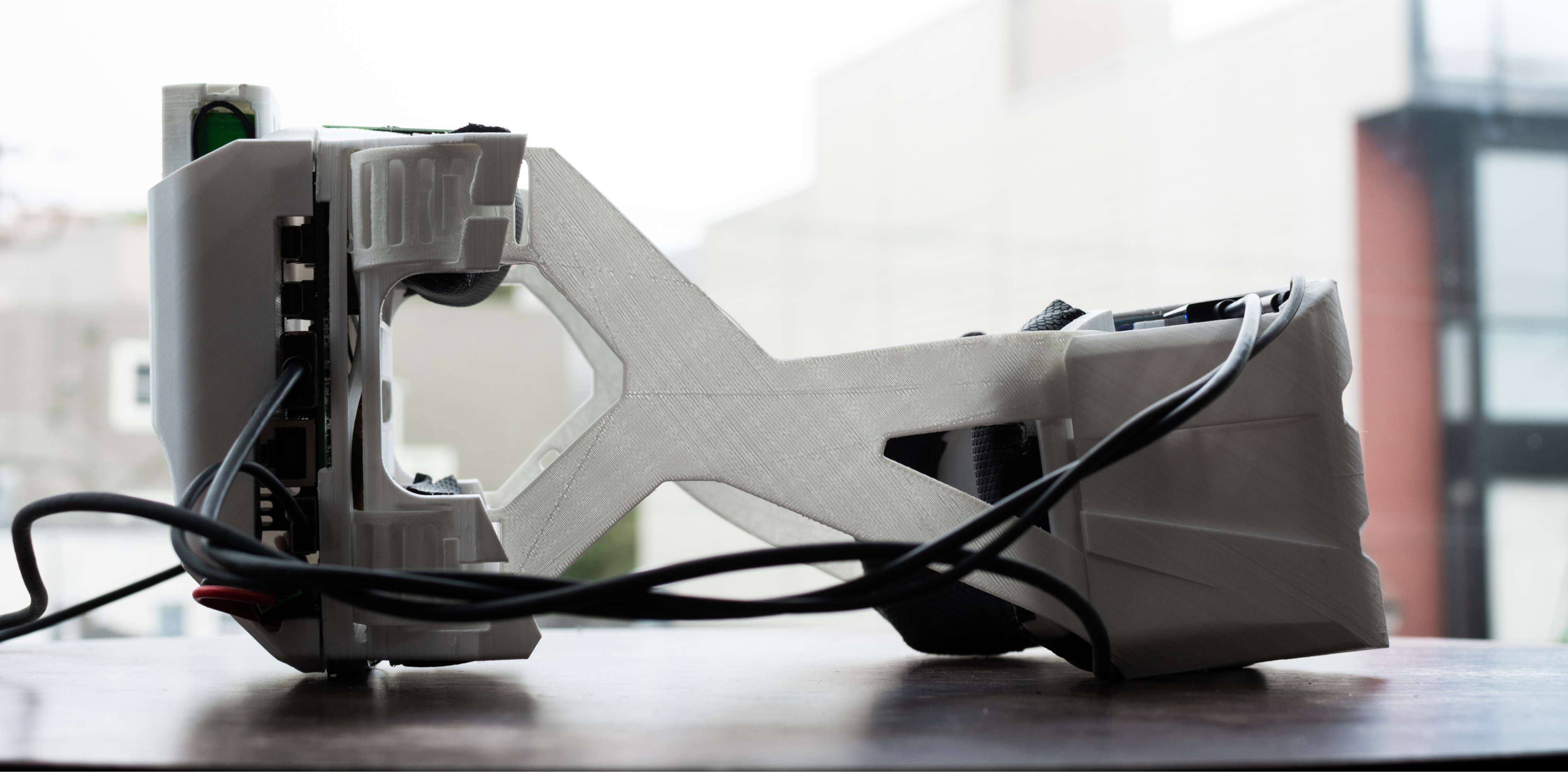
Role
I executed at every step of the creation of our VR headset from problem statement to delivery to customers. This included industrial design, creating mechanisms for modular assembly and local production.
Project
Virtual Reality Headset
2020
2020
Company Mission: Create a platform to enable the development of Web VR experiences
Existing native-based VR headsets were walled gardens, allowing no tinkering with hardware or software.
Web languages are significantly more popular than native programming languages.
How do we design and build a Web-based VR headset for developers?
Web Developer Community
Open Source
Access & Control
Because the Internet is relatively open, being able to edit and view the inner workings of the platform is an important competitive advantage to offer.
Modular
Tinker
Whether it’s creating and iterating on technology such as A-Frame, the Web Developer community is wide spread and collaborative.

Web Developer Community
Oculus
Closed Developer Ecosystems
Developing for the most popular headset on the Oculus platform at the time included an application and screening process. The number of exciting experiences to come out of the Oculus developer ecosystem was low.
Vive & Oculus
Native-Based
The platforms of HTC and Oculus were walled gardens. This limited the number of VR developers to only those with specific experience or skill in the space.

Defining the Headset
Combining our target audience insights and market research, we determined the key criteria of our headset.
Direction Hypothesis
A modular, open source VR headset made for the Web will attract and faciliate web developers to create VR experiences.

Prototyping and Development
 Personal
Personal
 Comfort
Comfort
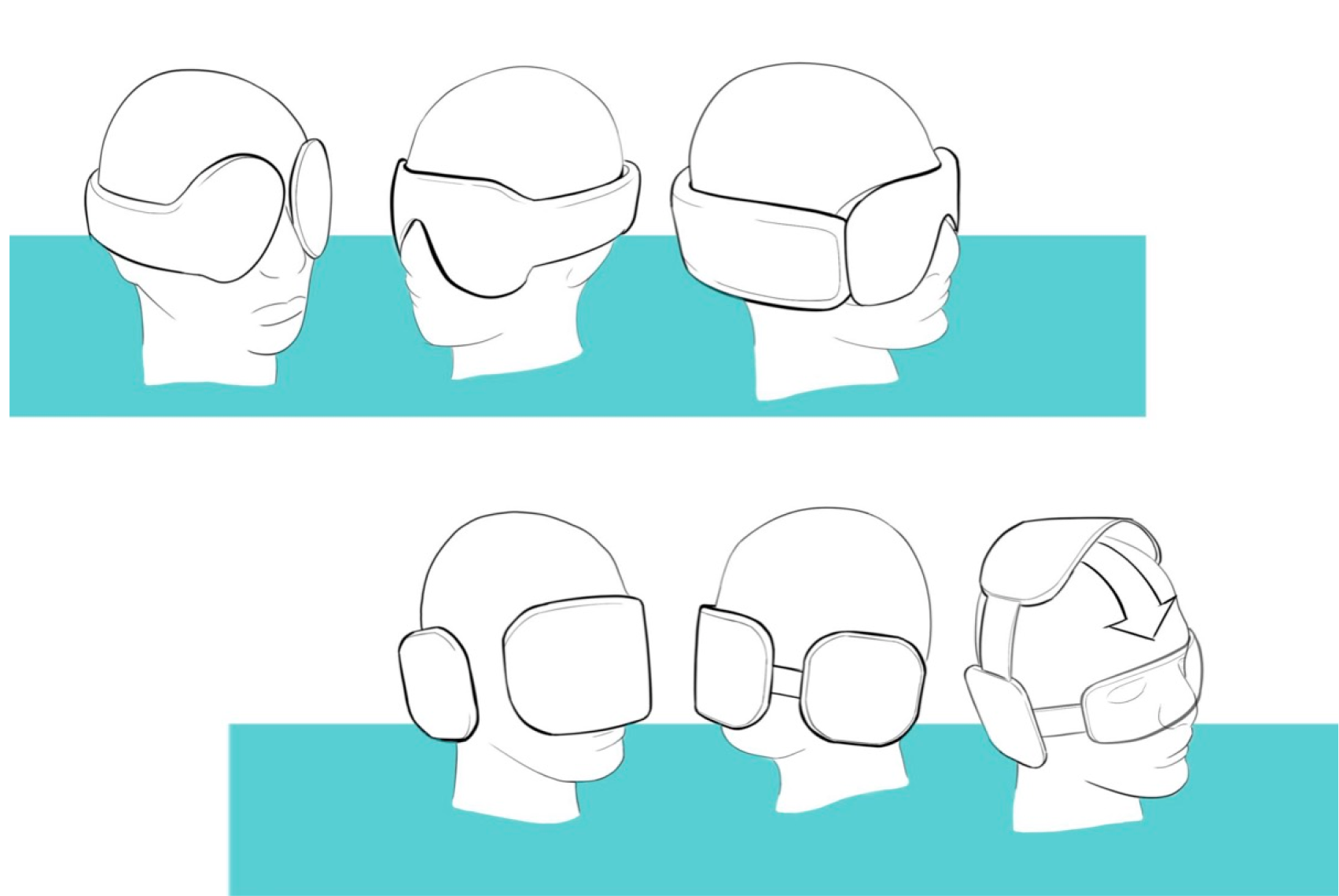 Convenience
Convenience
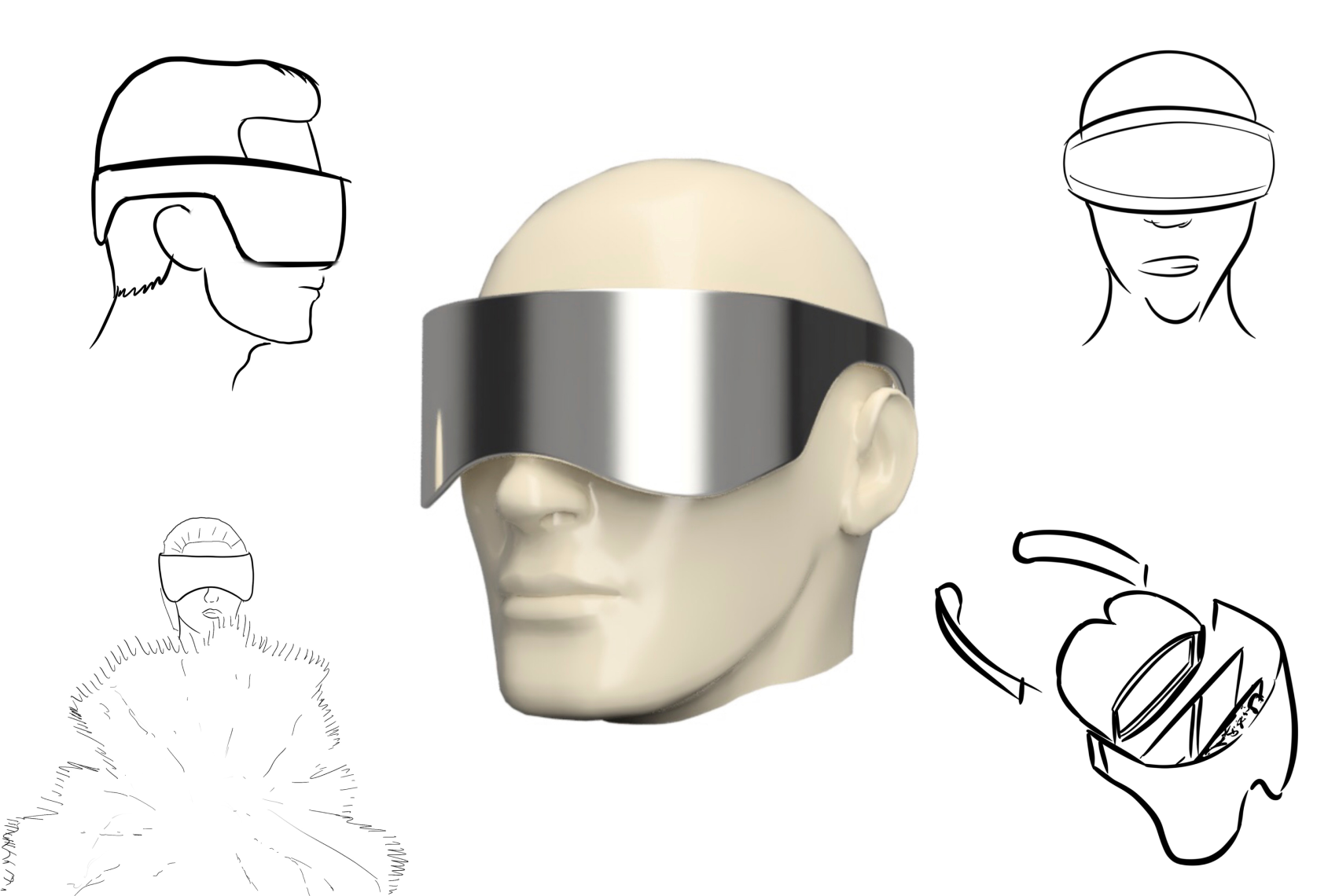 Stylish
Stylish
Initial Concept Exploration
Before the hardware constraints were set by the engineering team, I had a few days to play around with concepts and themes.
 Personal
Personal
 Comfort
Comfort
 Convenience
Convenience
 Stylish
Stylish
Designing With Constraints
Hardware Layout and Headset Structure
I explored a few configurations of hardware. The components were heavy, so splitting half to the front and half to the back was a necessity. Keeping the user in mind, I made sure each component and cable was easily accessible.
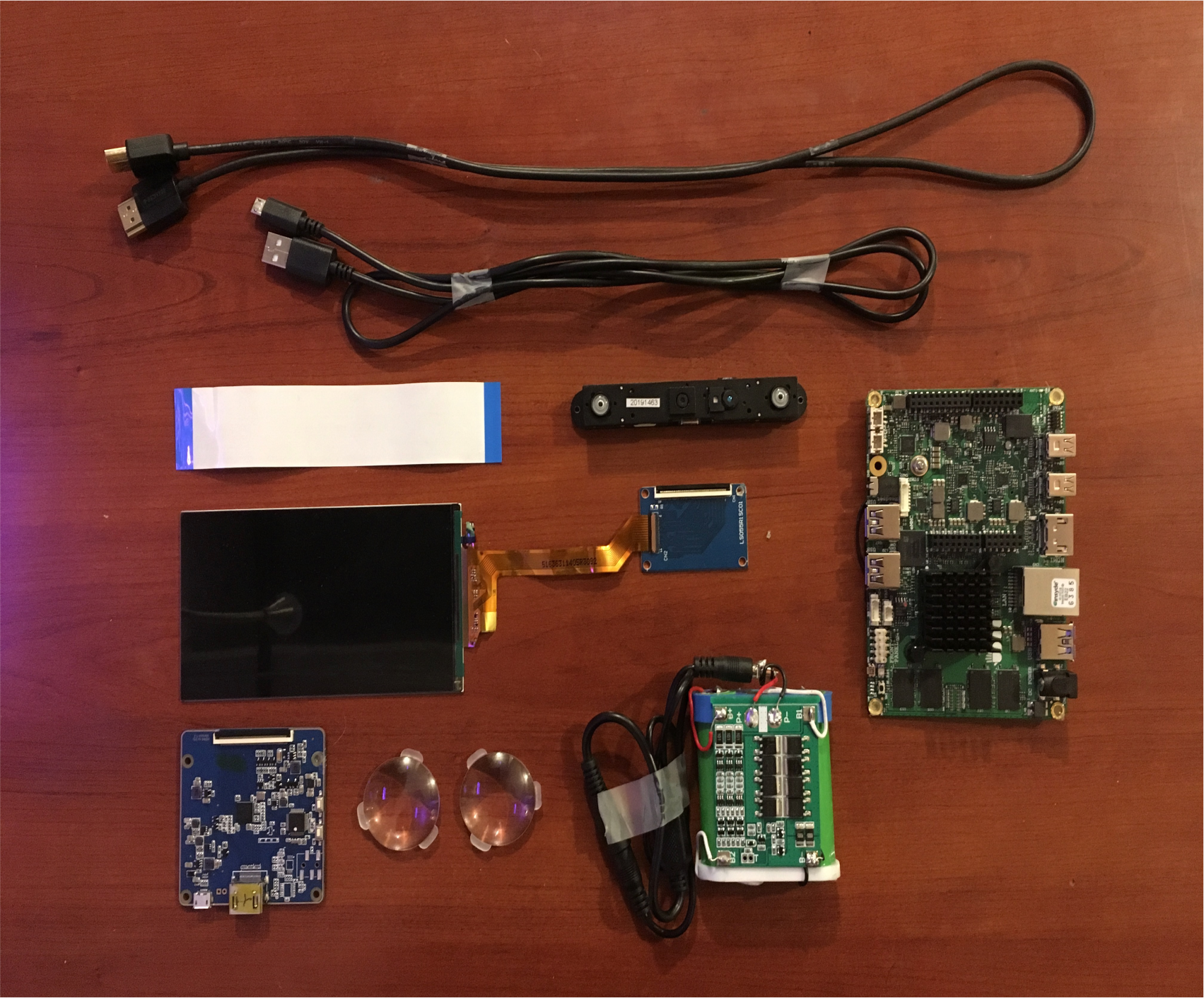
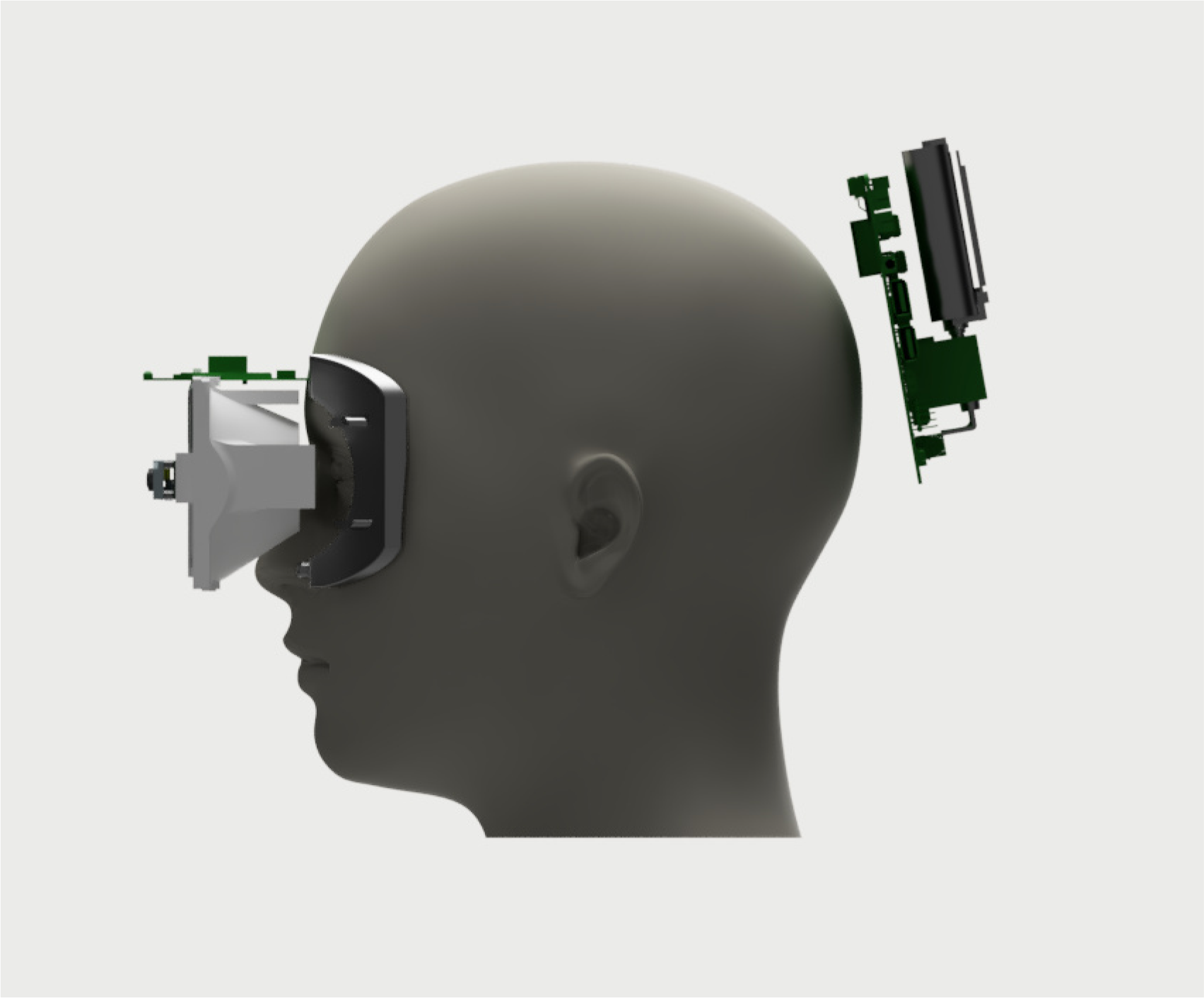
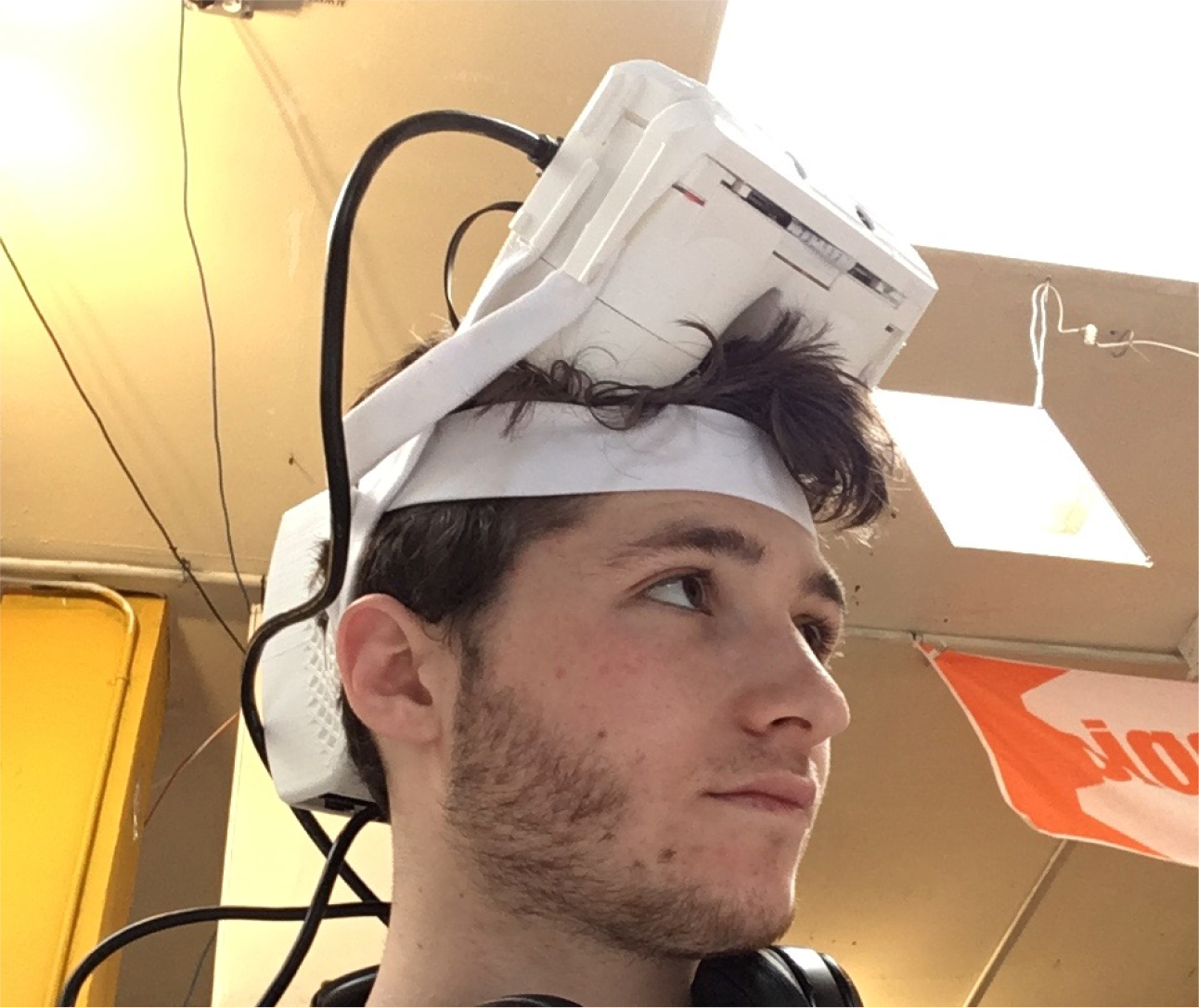
Flip-up Concept
I explored allowing users to quickly ‘flip up’ the headset front. Often when developing for VR, users switch between the code on their computer and the view in their headset. While great in theory, it was unsturdy in the ‘up’ position.
Final Component Configuration
A connection strap allowed for flexibility, and a secure wear by having a high and low connection point.

Adjustment Mechanism
Moving forward with the sturdy strap direction, I designed a racheting mechanism to adjust the distance between the front and back pieces. This would play a large part into the comfort of the headset. I used national averages of headsizes, and anyone I could test with, to develop the maximum, minimum, and intervals between.
Bar and Peg Method
Overly complicated, more adjustable. This required the user to take off the headset when adjusting which was a bad experience.
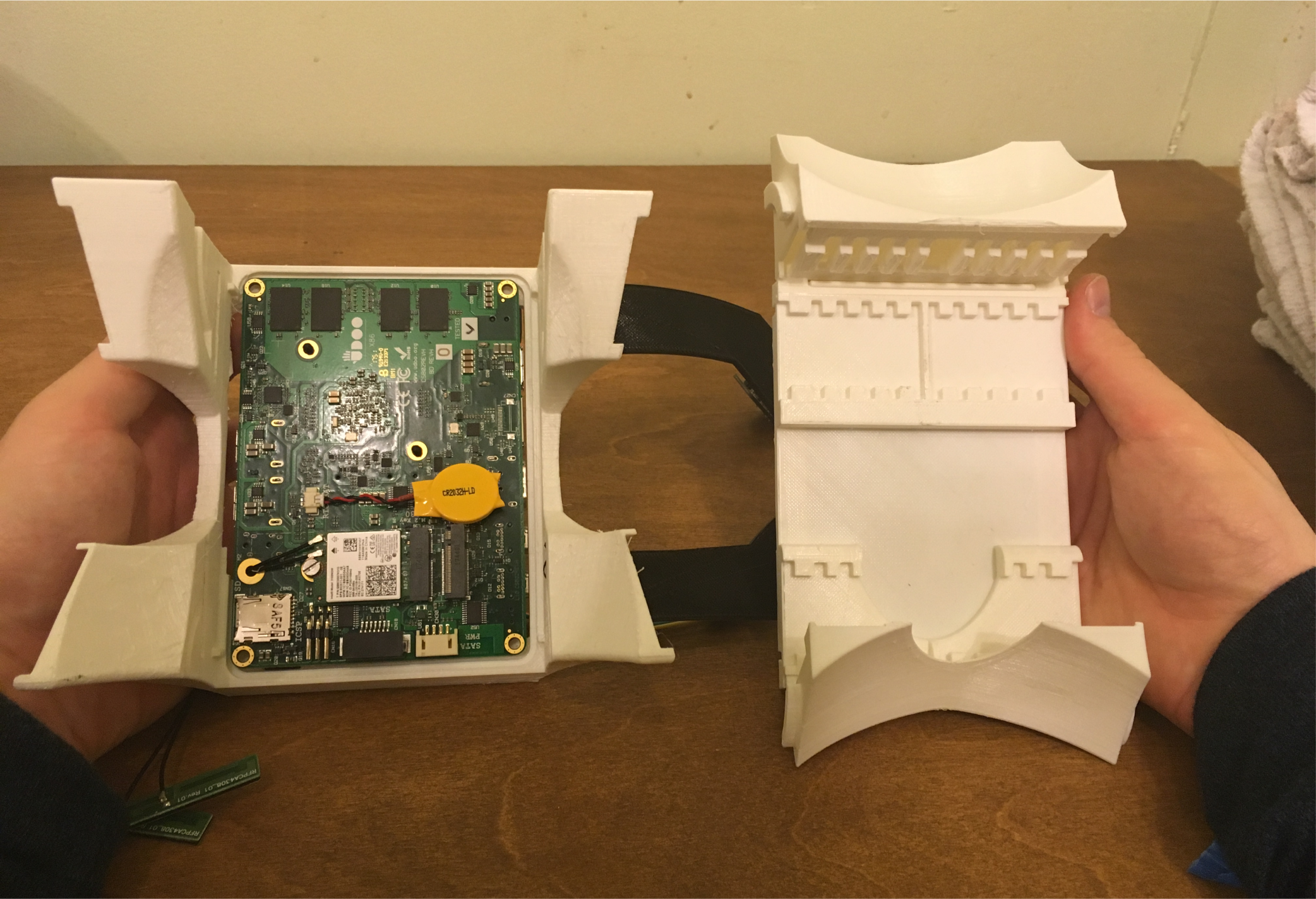
Final Direction
I simplified the mechanism to a one-directional pull system. This one required one hand (when on the headset) and used no moving parts.
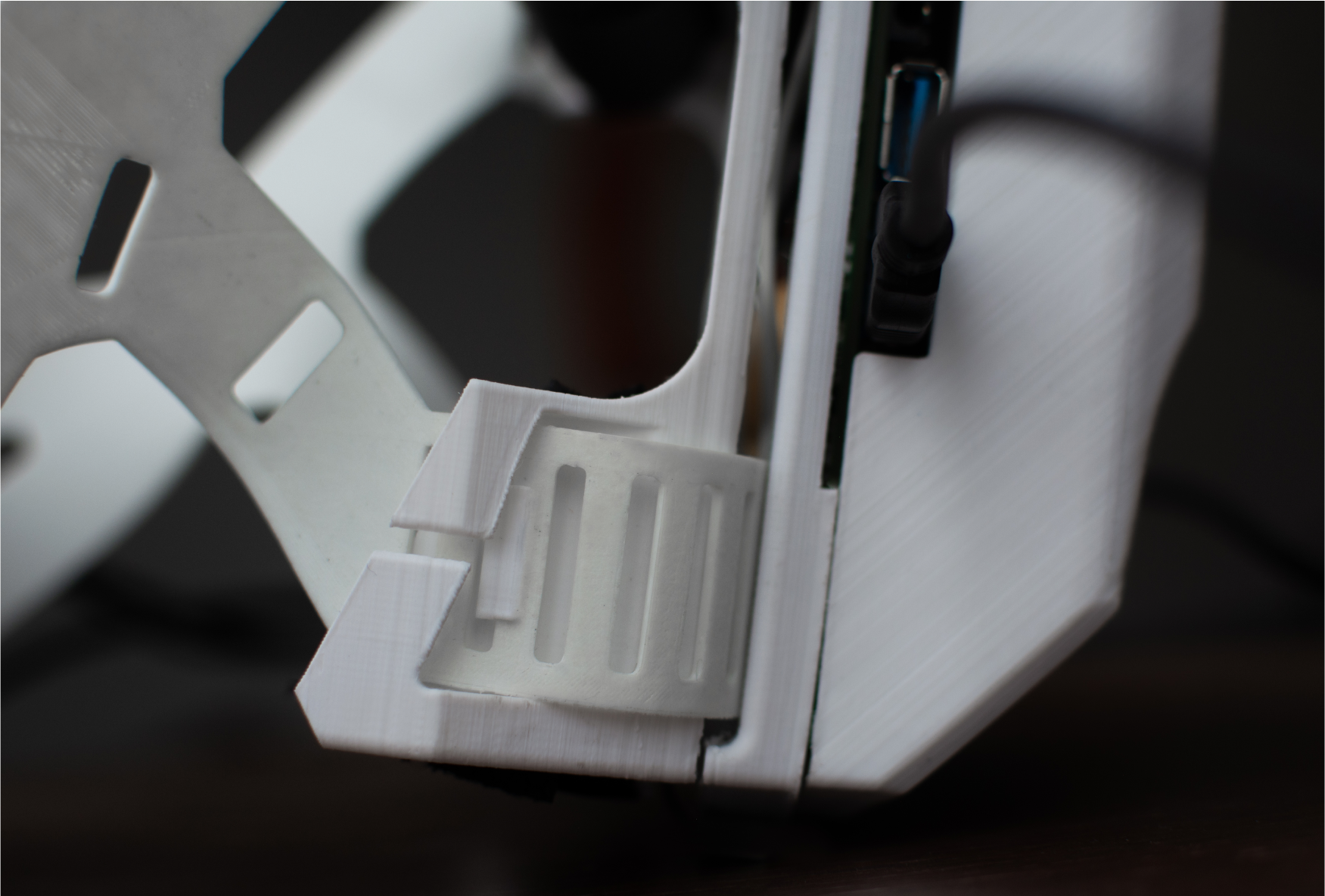
Comfort
With a skeleton defined, I focused on eye and head pads to make the headset as comfortable as possible.

Eye Pad Tests
I worked with Carbon 3D to develop a breathable plastic cushion using a lattice structure and their flexible resin. In the end, the parts were too expensive for our planned limited run of first units.
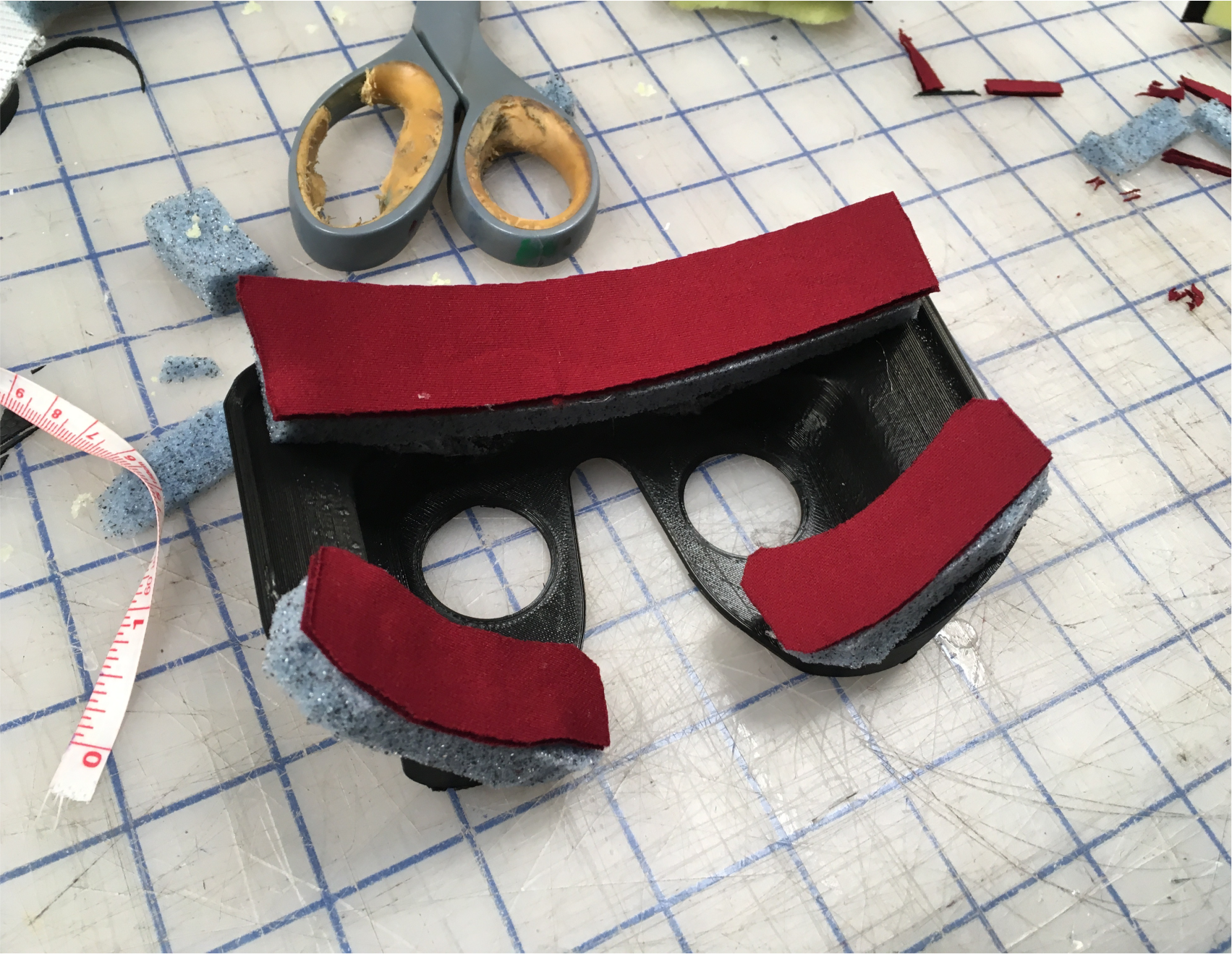
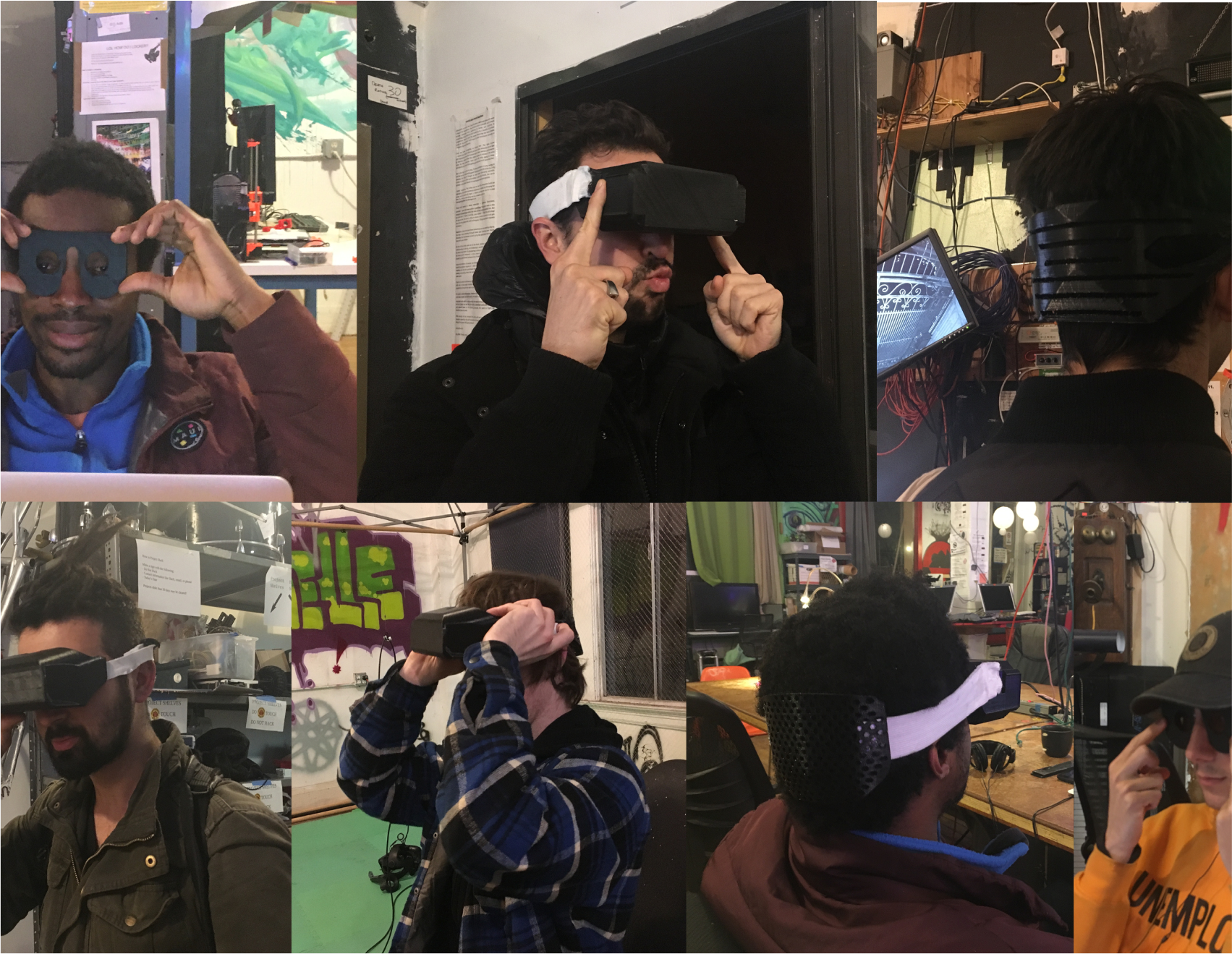
Final Pads
I tested several different foam and fabrc combinations and ended with a medium-firm foam and sporty, non-porous fabric.
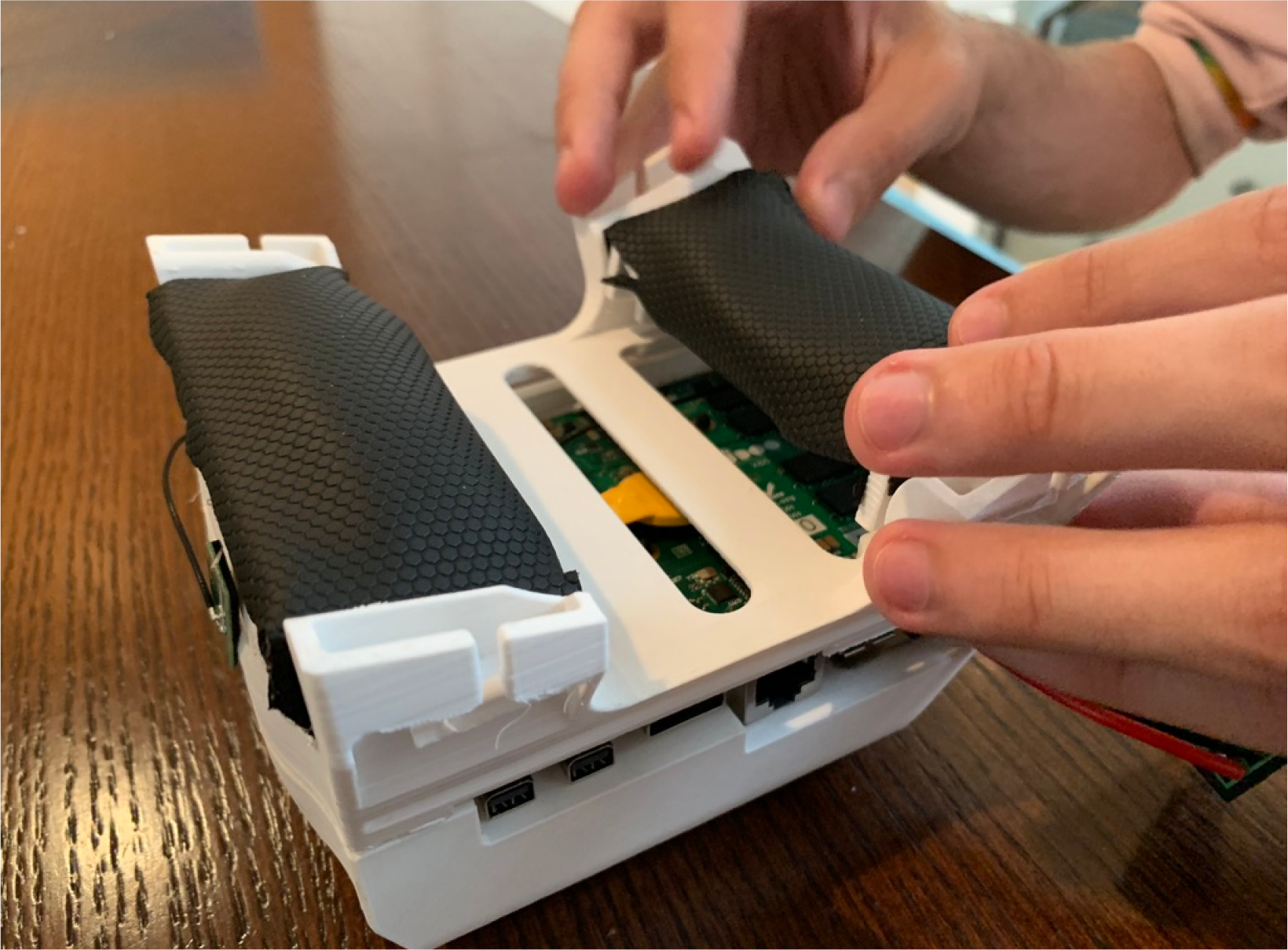
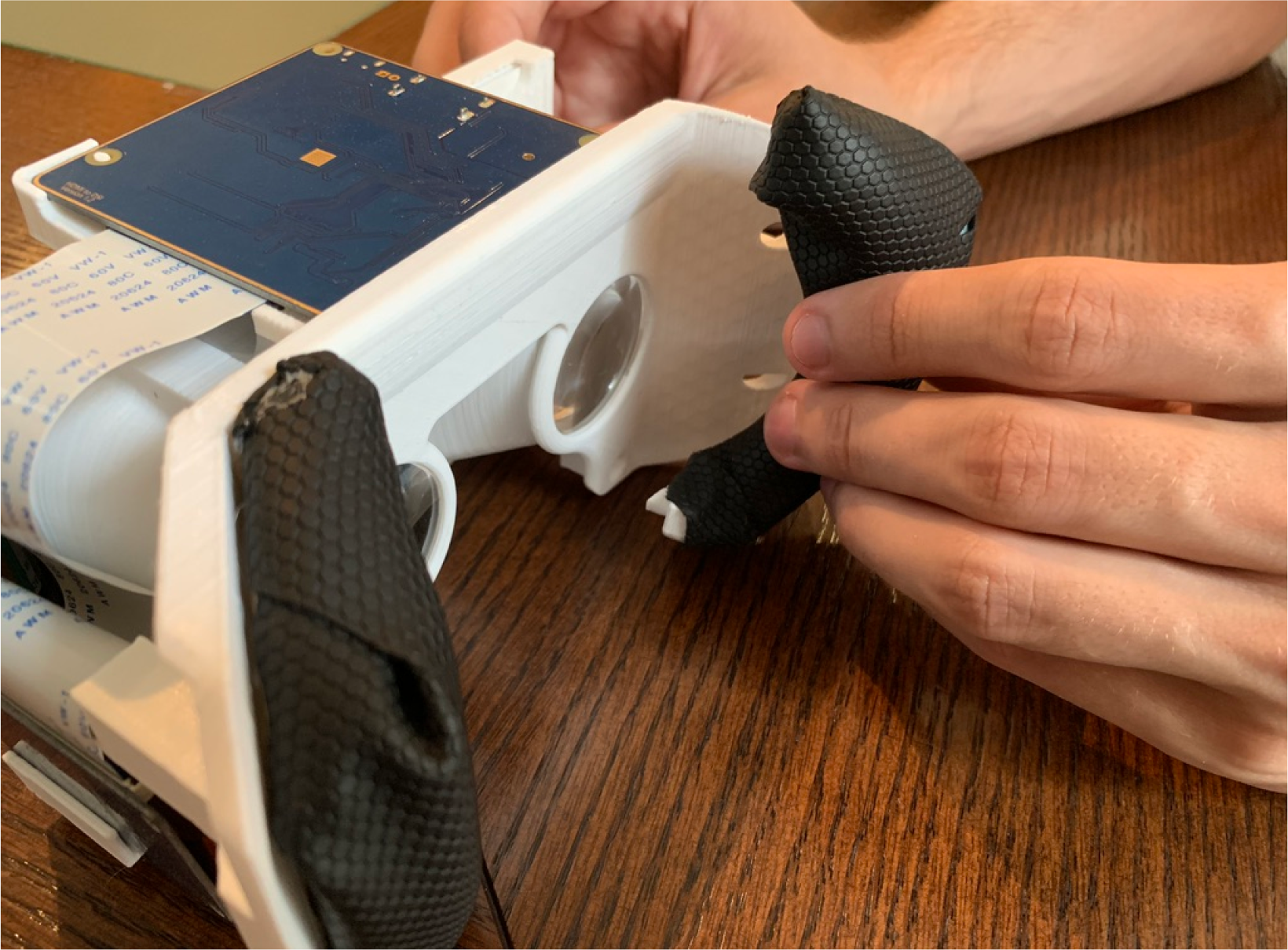
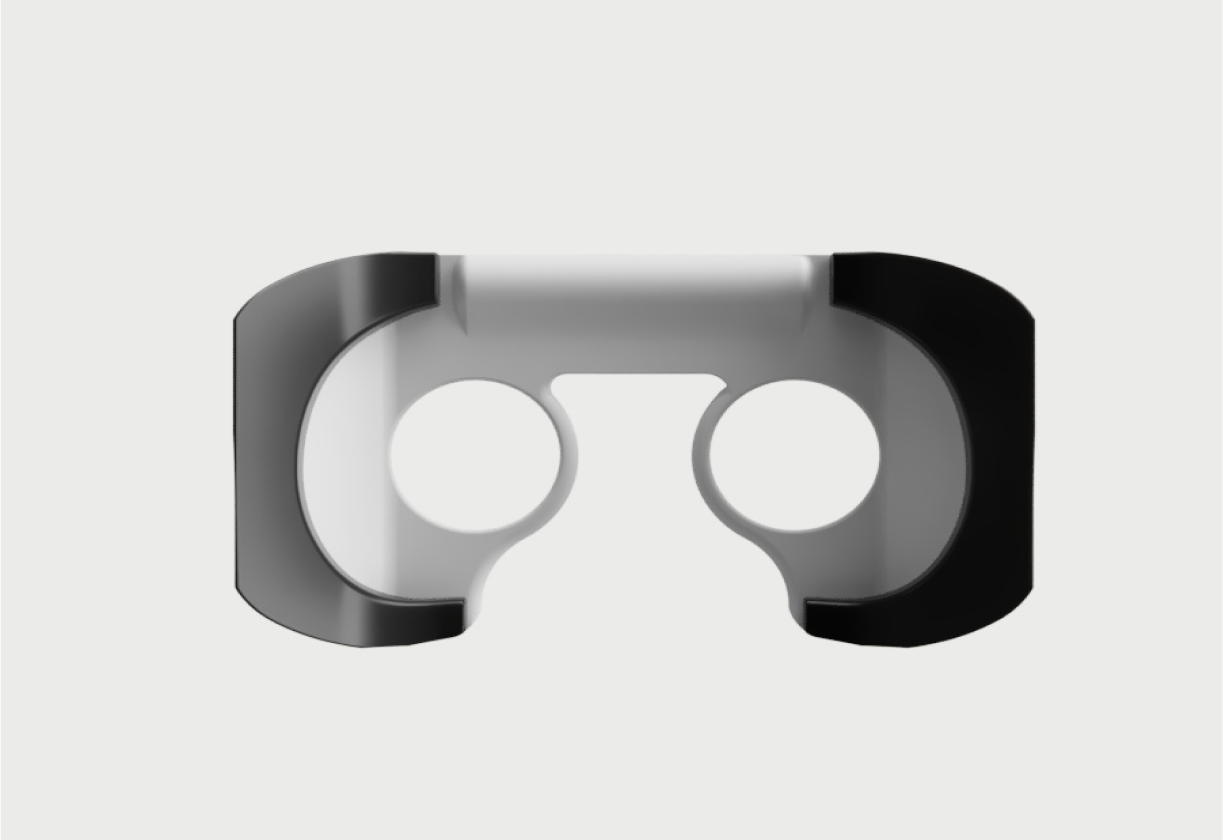
Eyepiece Layout
I found that the forehead produced the most sweat during longer sessions. I removed the forehead support and added more side support which made the face connection point was much more comfortable.
Form Refinement
Starting with a blocky, utilitarian form that was optimized to house components using the least amount of material, I developed a consistant form langauge between the front and back components.
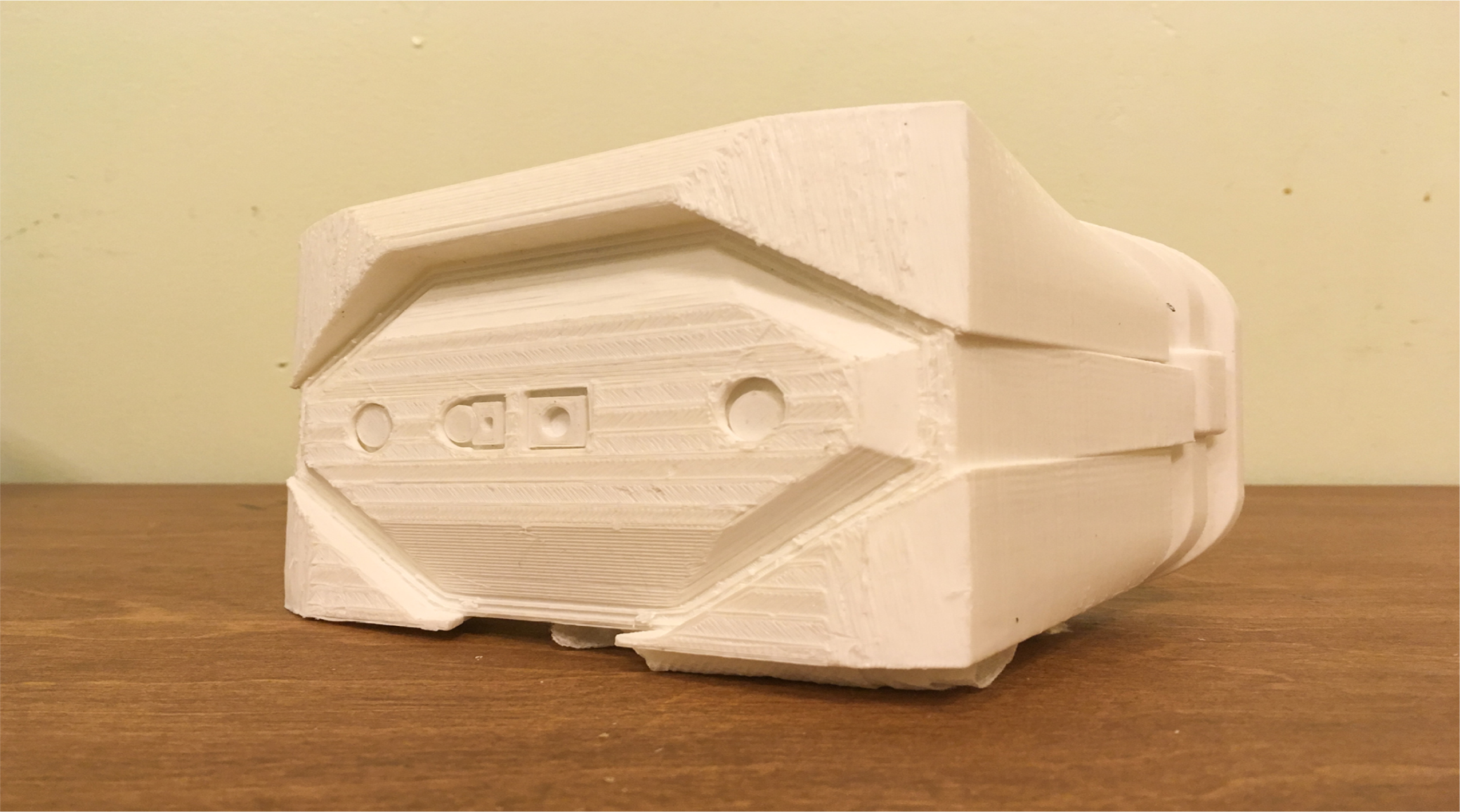
Form Direction
Inspired by tech of the 80s, I leaned into sharp bevels and cuts on the front face to take attention away from the cameras.
Mesh Experiments
I played around with different plastic mesh patterns as a way to show off some of the inside technology. In the end, the 3d printing (FDM) of these intricate structures is not feasible.

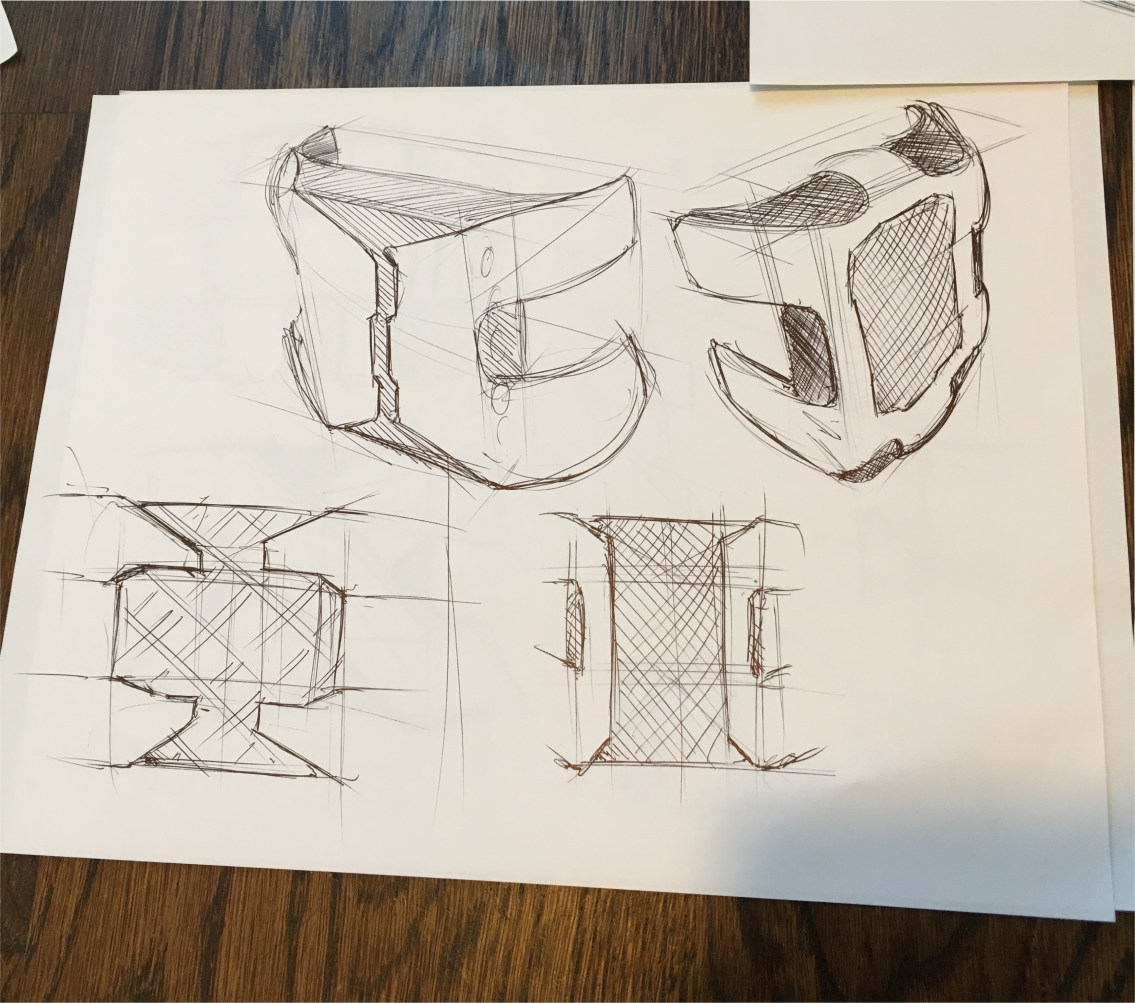
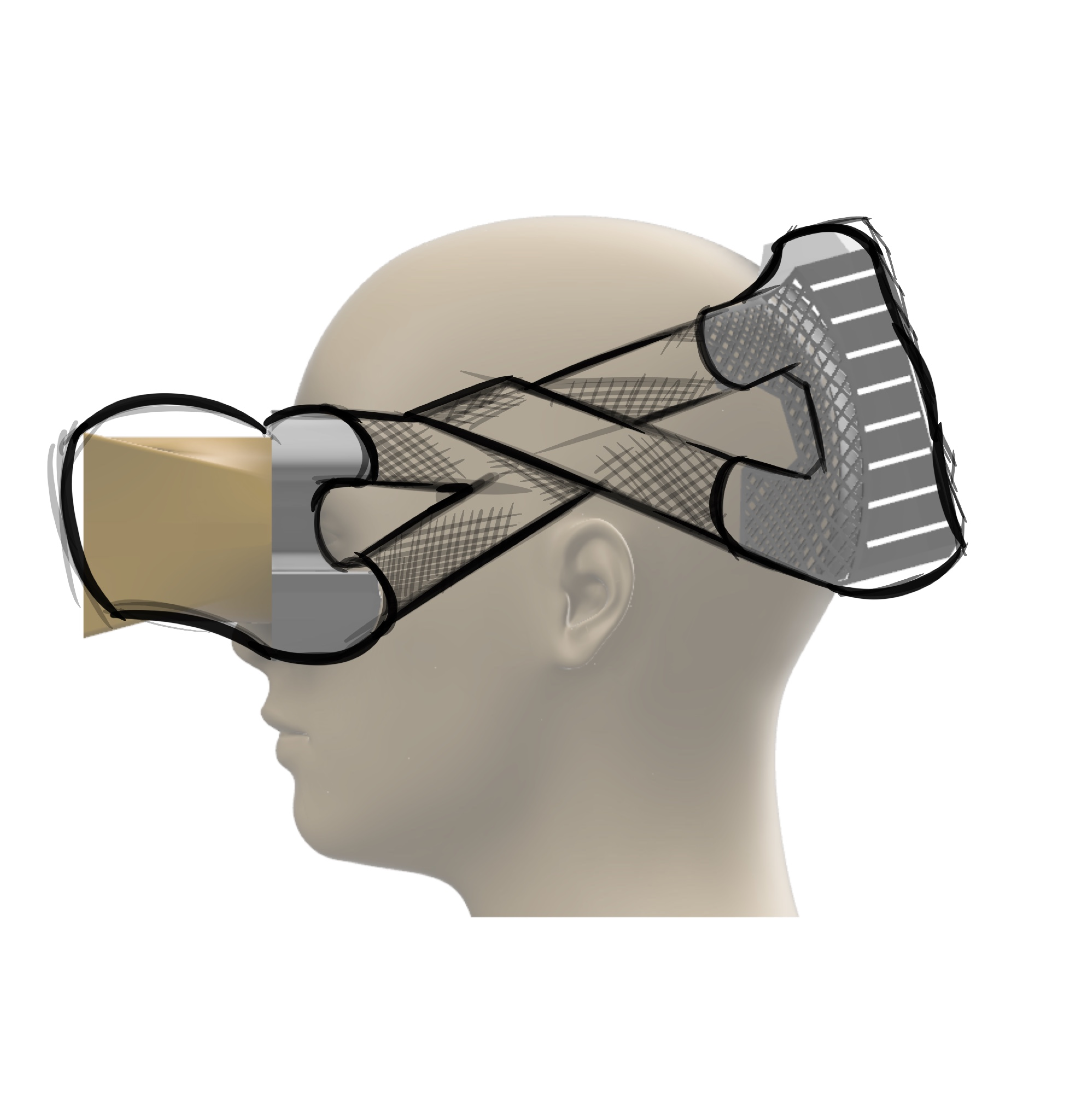



Final Form
I focused on creating a through-line from the front of the headset, along the straps, to the back. I thickened the connection point in the middle of the straps to give a sturdier appearance to the heavy headset.
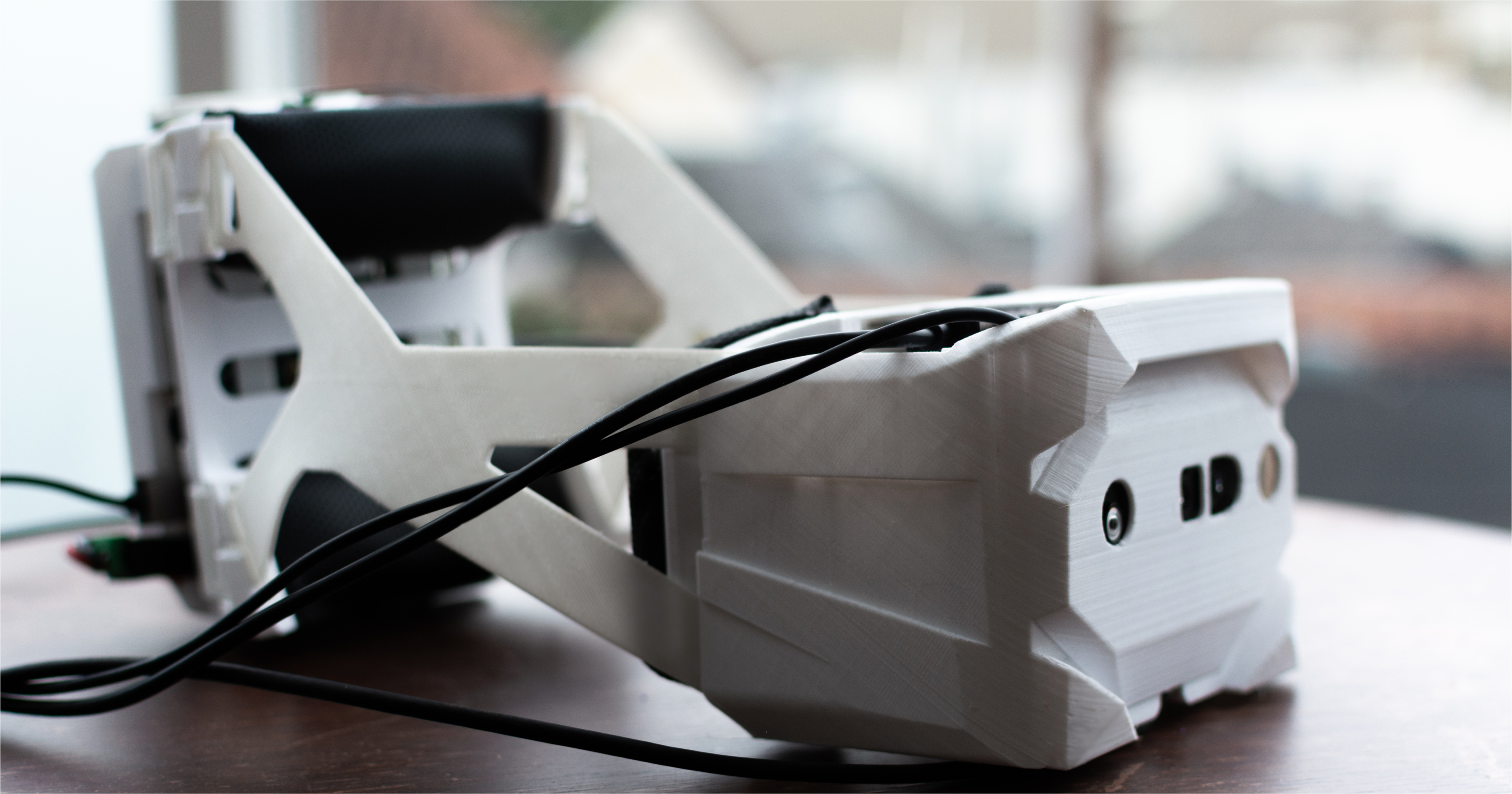
Modularity and Assembly
Each part of the headset was assembled by mechanisms and snap-fits. There was no adhessive, tapes, or parts other than the electrical hardware components. This way, the headset could be printed and assembled at home, either by us or by users.
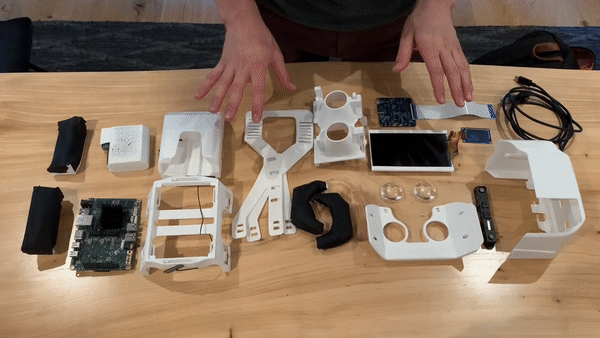
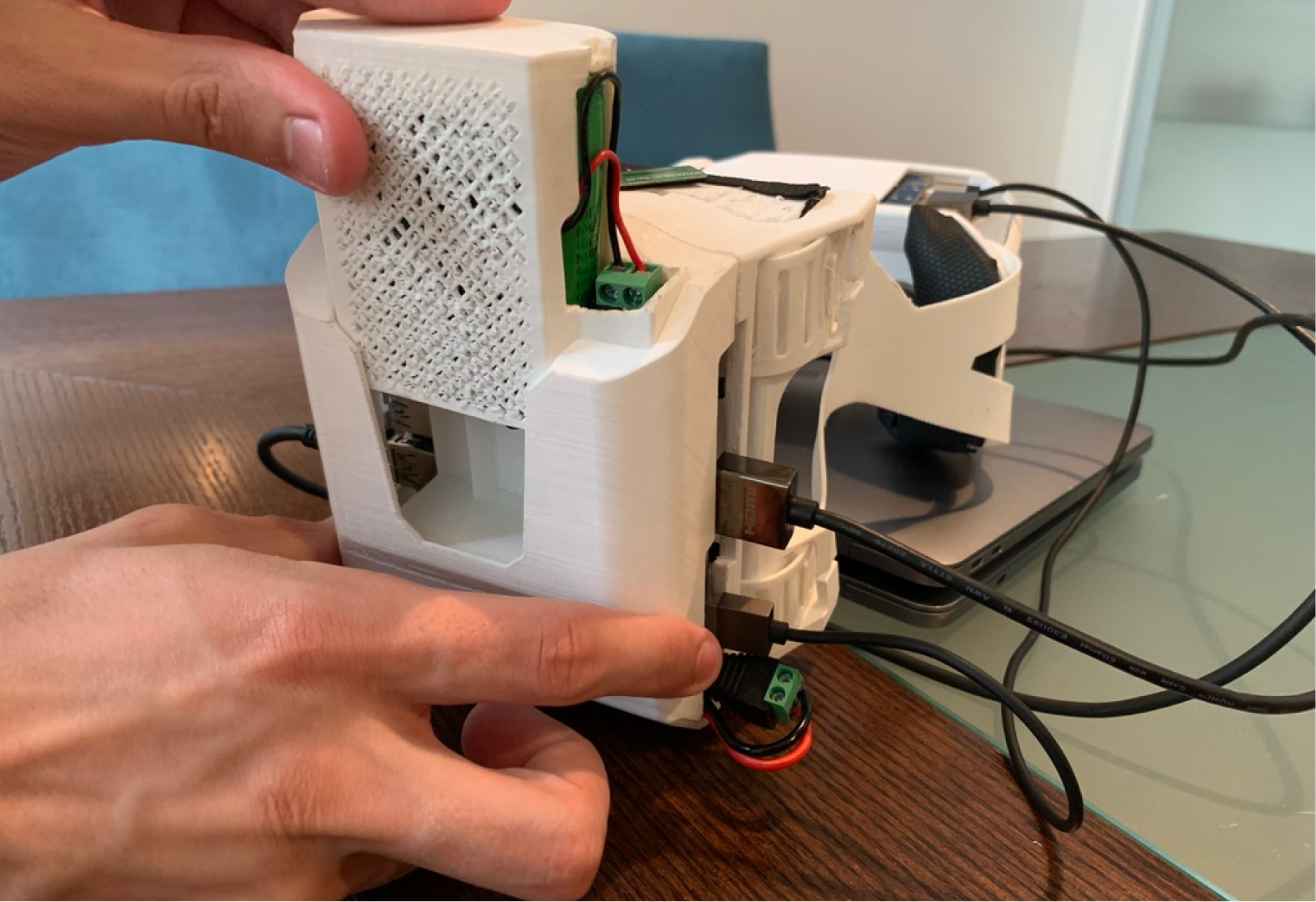
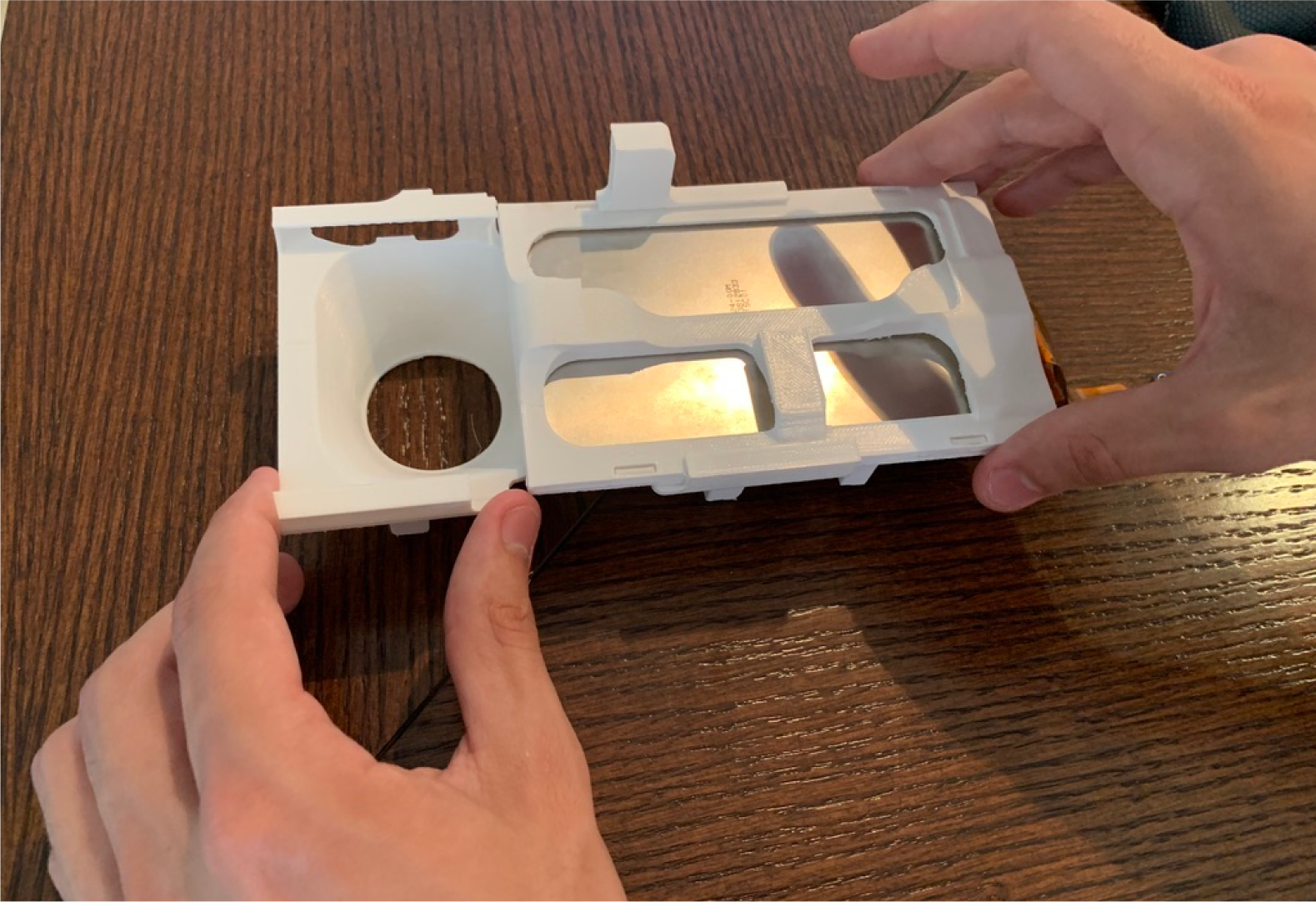
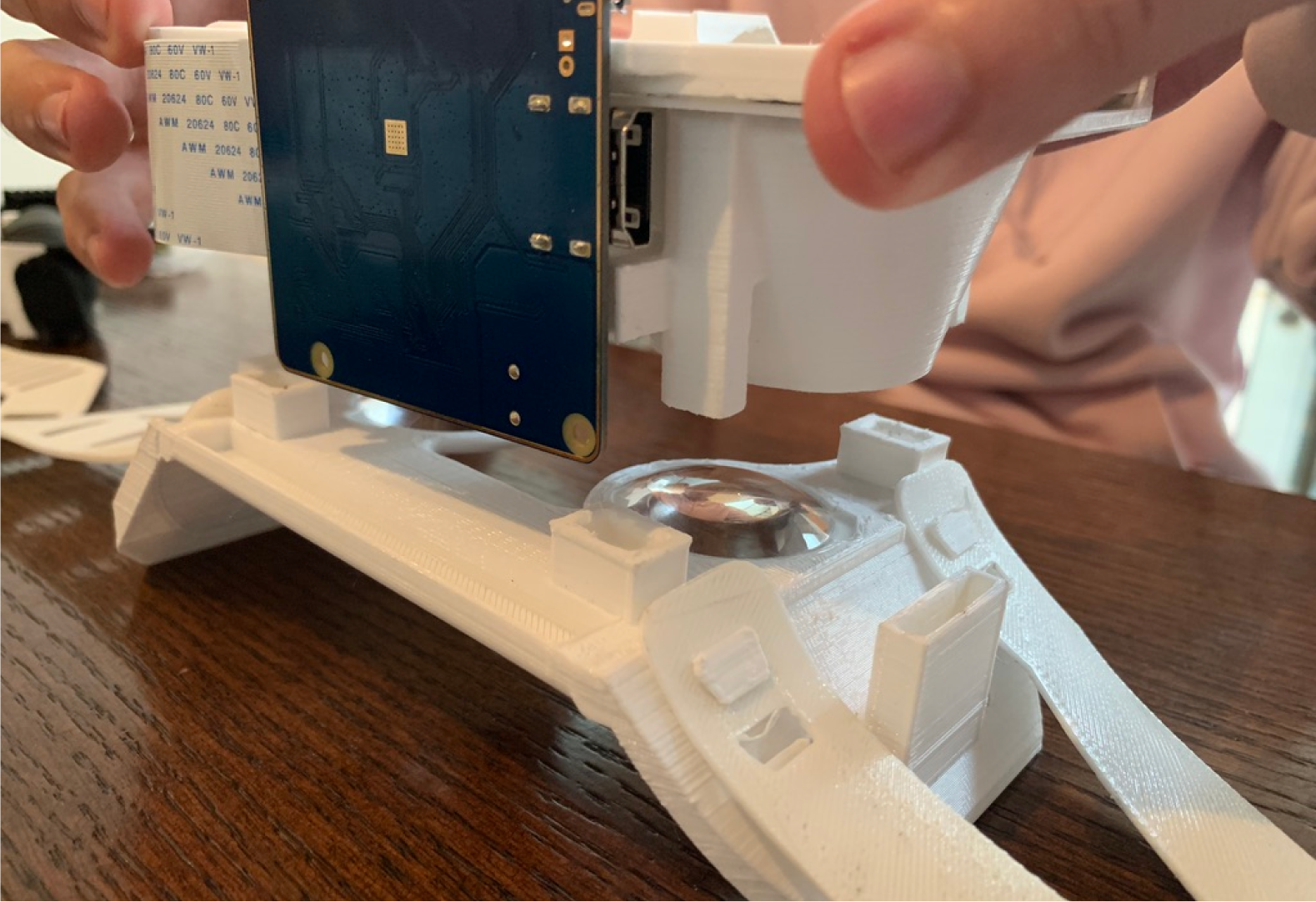
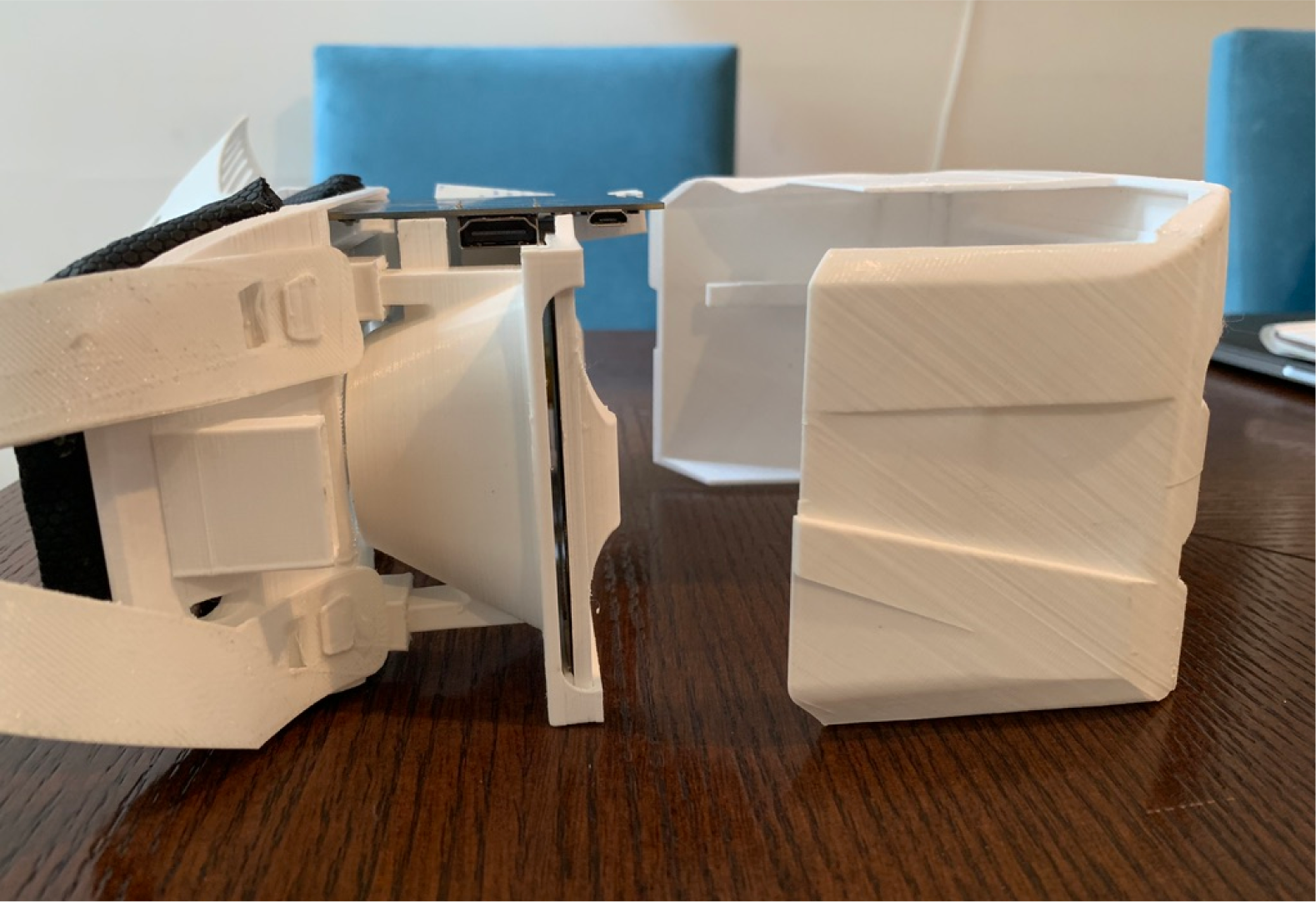

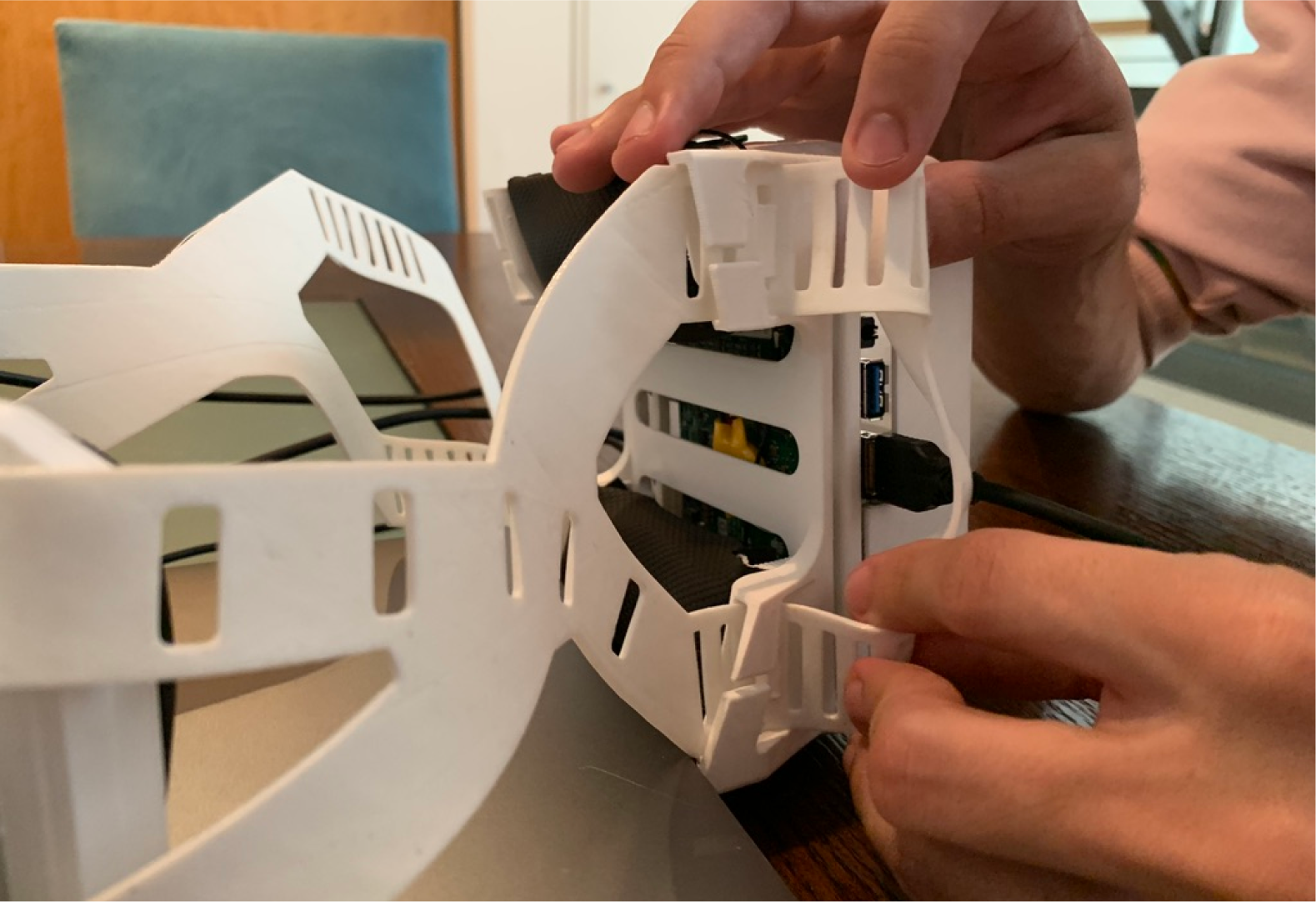
Final Outcomes
• We built the first standalone headset (this was before the Quest release) and included more advanced capabilities than existing headsets by Oculus or HTC.
• The headset helped communicated our vision to angel investors from which we raised capital.
• We attracted many developers and potential customers to our developer community.
• Unfortunately, before our Kickstarter release, we decided to pivot the company, so the headset was never released to customers.

